Chapter 1 Analytical Objectives, or: What Analytical Chemists Do 1
1.1 What Is Analytical Science?, 2
1.2 Qualitative and Quantitative Analysis: What Does Each Tell Us?, 3
1.3 Getting Started: The Analytical Process, 6
1.4 Validation of a Method—You Have to Prove It Works!, 15
1.5 Analyze Versus Determine—They Are Different, 16
1.6 Some Useful Websites, 16
Chapter 2 Basic Tools and Operations of Analytical Chemistry 20
2.1 The Laboratory Notebook—Your Critical Record, 20
2.2 Laboratory Materials and Reagents, 23
2.3 The Analytical Balance—The Indispensible Tool, 23
2.4 Volumetric Glassware—Also Indispensible, 30
2.5 Preparation of Standard Base Solutions, 42
2.6 Preparation of Standard Acid Solutions, 42
2.7 Other Apparatus—Handling and Treating Samples, 43
2.8 Igniting Precipitates—Gravimetric Analysis, 48
2.9 Obtaining the Sample—Is It Solid, Liquid, or Gas?, 49
2.10 Operations of Drying and Preparing a Solution of the Analyte, 51
2.11 Laboratory Safety, 57
Chapter 3 Statistics and Data Handling in Analytical Chemistry 62
3.1 Accuracy and Precision: There Is a Difference, 62
3.2 Determinate Errors—They Are Systematic, 63
3.3 Indeterminate Errors—They Are Random, 64
3.4 Significant Figures: How Many Numbers Do You Need?, 65
3.5 Rounding Off, 71
3.6 Ways of Expressing Accuracy, 71
3.7 Standard Deviation—The Most Important Statistic, 72
3.8 Propagation of Errors—Not Just Additive, 75
3.9 Significant Figures and Propagation of Error, 81
3.10 Control Charts, 83
3.11 The Confidence Limit—How Sure Are You?, 84
3.12 Tests of Significance—Is There a Difference?, 86
3.13 Rejection of a Result: The Q Test, 95
3.14 Statistics for Small Data Sets, 98
3.15 Linear Least Squares—How to Plot the Right Straight Line, 99
3.16 Correlation Coefficient and Coefficient of Determination, 104
3.17 Detection Limits—There Is No Such Thing as Zero, 105
3.18 Statistics of Sampling—How Many Samples, How Large?, 107
3.19 Powering a Study: Power Analysis, 110
3.20 Use of Spreadsheets in Analytical Chemistry, 112
3.21 Using Spreadsheets for Plotting Calibration Curves, 117
3.22 Slope, Intercept, and Coefficient of Determination, 118
3.23 LINEST for Additional Statistics, 119
3.24 Statistics Software Packages, 120
Chapter 4 Good Laboratory Practice: Quality Assurance and Method Validation 132
4.1 What Is Good Laboratory Practice?, 133
4.2 Validation of Analytical Methods, 134
4.3 Quality Assurance—Does the Method Still Work?, 143
4.4 Laboratory Accreditation, 144
4.5 Electronic Records and Electronic Signatures: 21 CFR, Part 11, 145
4.6 Some Official Organizations, 146
Chapter 5 Stoichiometric Calculations: The Workhorse of the Analyst 149
5.1 Review of the Fundamentals, 149
5.2 How Do We Express Concentrations of Solutions?, 152
5.3 Expressions of Analytical Results—So Many Ways, 159
5.4 Volumetric Analysis: How Do We Make Stoichiometric Calculations?, 166
5.5 Volumetric Calculations—Let’s Use Molarity, 169
5.6 Titer—How to Make Rapid Routine Calculations, 179
5.7 Weight Relationships—You Need These for Gravimetric Calculations, 180
Chapter 6 General Concepts of Chemical Equilibrium 188
6.1 Chemical Reactions: The Rate Concept, 188
6.2 Types of Equilibria, 190
6.3 Gibbs Free Energy and the Equilibrium Constant, 191
6.4 Le Châtelier’s Principle, 192
6.5 Temperature Effects on Equilibrium Constants, 192
6.6 Pressure Effects on Equilibria, 192
6.7 Concentration Effects on Equilibria, 193
6.8 Catalysts, 193
6.9 Completeness of Reactions, 193
6.10 Equilibrium Constants for Dissociating or Combining Species—Weak Electrolytes and Precipitates, 194
6.11 Calculations Using Equilibrium Constants—Composition at Equilibrium?, 195
6.12 The Common Ion Effect—Shifting the Equilibrium, 203
6.13 Systematic Approach to Equilibrium Calculations—How to Solve Any Equilibrium Problem, 204
6.14 Some Hints for Applying the Systematic Approach for Equilibrium Calculations, 208
6.15 Heterogeneous Equilibria—Solids Don’t Count, 211
6.16 Activity and Activity Coefficients—Concentration Is Not the Whole Story, 211
6.17 The Diverse Ion Effect: The Thermodynamic Equilibrium Constant and Activity Coefficients, 217
Chapter 7 Acid–Base Equilibria 222
7.1 The Early History of Acid—Base Concepts, 222
7.2 Acid–Base Theories—Not All Are Created Equal, 223
7.3 Acid–Base Equilibria in Water, 225
7.4 The pH Scale, 227
7.5 pH at Elevated Temperatures: Blood pH, 231
7.6 Weak Acids and Bases—What Is the pH?, 232
7.7 Salts of Weak Acids and Bases—They Aren’t Neutral, 234
7.8 Buffers—Keeping the pH Constant (or Nearly So), 238
7.9 Polyprotic Acids and Their Salts, 245
7.10 Ladder Diagrams, 247
7.11 Fractions of Dissociating Species at a Given pH: α Values—How Much of Each Species?, 248
7.12 Salts of Polyprotic Acids—Acid, Base, or Both?, 255
7.13 Physiological Buffers—They Keep You Alive, 261
7.14 Buffers for Biological and Clinical Measurements, 263
7.15 Diverse Ion Effect on Acids and Bases: cKa and cKb—Salts Change the pH, 266
7.16 log C—pH Diagrams, 266
7.17 Exact pH Calculators, 269
Chapter 8 Acid–Base Titrations 281
8.1 Strong Acid versus Strong Base—The Easy Titrations, 282
8.2 The Charge Balance Method—An Excel Exercise for the Titration of a Strong Acid and a Strong Base, 285
8.3 Detection of the End Point: Indicators, 288
8.4 Standard Acid and Base Solutions, 290
8.5 Weak Acid versus Strong Base—A Bit Less Straightforward, 290
8.6 Weak Base versus Strong Acid, 295
8.7 Titration of Sodium Carbonate—A Diprotic Base, 296
8.8 Using a Spreadsheet to Perform the Sodium Carbonate—HCl Titration, 298
8.9 Titration of Polyprotic Acids, 300
8.10 Mixtures of Acids or Bases, 302
8.11 Equivalence Points from Derivatives of a Titration Curve, 304
8.12 Titration of Amino Acids—They Are Acids and Bases, 309
8.13 Kjeldahl Analysis: Protein Determination, 310
8.14 Titrations Without Measuring Volumes, 312
Chapter 9 Complexometric Reactions and Titrations 322
9.1 Complexes and Formation Constants—How Stable Are Complexes?, 322
9.2 Chelates: EDTA—The Ultimate Titrating Agent for Metals, 325
9.3 Metal–EDTA Titration Curves, 331
9.4 Detection of the End Point: Indicators—They Are Also Chelating Agents, 334
9.5 Other Uses of Complexes, 336
9.6 Cumulative Formation Constants β and Concentrations of Specific Species in Stepwise Formed Complexes, 336
Chapter 10 Gravimetric Analysis and Precipitation Equilibria 342
10.1 How to Perform a Successful Gravimetric Analysis, 343
10.2 Gravimetric Calculations—How Much Analyte Is There?, 349
10.3 Examples of Gravimetric Analysis, 353
10.4 Organic Precipitates, 353
10.5 Precipitation Equilibria: The Solubility Product, 355
10.6 Diverse Ion Effect on Solubility: Ksp and Activity Coefficients, 361
Chapter 11 Precipitation Reactions and Titrations 366
11.1 Effect of Acidity on Solubility of Precipitates: Conditional Solubility Product, 366
11.2 Mass Balance Approach for Multiple Equilibria, 368
11.3 Effect of Complexation on Solubility: Conditional Solubility Product, 372
11.4 Precipitation Titrations, 374
Chapter 12 Electrochemical Cells and Electrode Potentials 383
12.1 What Are Redox Reactions?, 384
12.2 Electrochemical Cells—What Electroanalytical Chemists Use, 384
12.3 Nernst Equation—Effects of Concentrations on Potentials, 390
12.4 Formal Potential—Use It for Defined Nonstandard Solution Conditions, 394
12.5 Limitations of Electrode Potentials, 395
Chapter 13 Potentiometric Electrodes and Potentiometry 399
13.1 Metal Electrodes for Measuring the Metal Cation, 400
13.2 Metal–Metal Salt Electrodes for Measuring the Salt Anion, 401
13.3 Redox Electrodes—Inert Metals, 402
13.4 Voltaic Cells without Liquid Junction—For Maximum Accuracy, 404
13.5 Voltaic Cells with Liquid Junction—The Practical Kind, 405
13.6 Reference Electrodes: The Saturated Calomel Electrode, 407
13.7 Measurement of Potential, 409
13.8 Determination of Concentrations from Potential Measurements, 411
13.9 Residual Liquid-Junction Potential—It Should Be Minimized, 411
13.10 Accuracy of Direct Potentiometric Measurements—Voltage Error versus Activity Error, 412
13.11 Glass pH Electrode—Workhorse of Chemists, 413
13.12 Standard Buffers—Reference for pH Measurements, 418
13.13 Accuracy of pH Measurements, 420
13.14 Using the pH Meter—How Does It Work?, 421
13.15 pH Measurement of Blood—Temperature Is Important, 422
13.16 pH Measurements in Nonaqueous Solvents, 423
13.17 Ion-Selective Electrodes, 424
13.18 Chemical Analysis on Mars using Ion-Selective Electrodes, 432
Chapter 14 Redox and Potentiometric Titrations 437
14.1 First: Balance the Reduction–Oxidation Reaction, 437
14.2 Calculation of the Equilibrium Constant of a Reaction—Needed to Calculate Equivalence Point Potentials, 438
14.3 Calculating Redox Titration Curves, 441
14.4 Visual Detection of the End Point, 445
14.5 Titrations Involving Iodine: Iodimetry and Iodometry, 447
14.6 Titrations with Other Oxidizing Agents, 452
14.7 Titrations with Other Reducing Agents, 454
14.8 Preparing the Solution—Getting the Analyte in the Right Oxidation State before Titration, 454
14.9 Potentiometric Titrations (Indirect Potentiometry), 456
Chapter 15 Voltammetry and Electrochemical Sensors 466
15.1 Voltammetry, 467
15.2 Amperometric Electrodes—Measurement of Oxygen, 472
15.3 Electrochemical Sensors: Chemically Modified Electrodes, 472
15.4 Ultramicroelectrodes, 474
15.5 Microfabricated Electrochemical Sensors, 474
15.6 Micro and Ultramicroelectrode Arrays, 475
Chapter 16 Spectrochemical Methods 477
16.1 Interaction of Electromagnetic Radiation with Matter, 478
16.2 Electronic Spectra and Molecular Structure, 484
16.3 Infrared Absorption and Molecular Structure, 489
16.4 Near-Infrared Spectrometry for Nondestructive Testing, 491
16.5 Spectral Databases—Identifying Unknowns, 493
16.6 Solvents for Spectrometry, 493
16.7 Quantitative Calculations, 494
16.8 Spectrometric Instrumentation, 504
16.9 Types of Instruments, 519
16.10 Array Spectrometers—Getting the Entire Spectrum at Once, 522
16.11 Fourier Transform Infrared Spectrometers, 523
16.12 Near-IR Instruments, 525
16.13 Spectrometric Error in Measurements, 526
16.14 Deviation from Beer’s Law, 527
16.15 Fluorometry, 530
16.16 Chemiluminescence, 538
16.17 Fiber-Optic Sensors, 540
Chapter 17 Atomic Spectrometric Methods 548
17.1 Principles: Distribution between Ground and Excited States—Most Atoms Are in the Ground State, 550
17.2 Flame Emission Spectrometry, 553
17.3 Atomic Absorption Spectrometry, 556
17.4 Sample Preparation—Sometimes Minimal, 567
17.5 Internal Standard and Standard Addition Calibration, 567
17.6 Atomic Emission Spectrometry: The Induction Coupled Plasma (ICP), 569
17.7 Atomic Fluorescence Spectrometry, 574
Chapter 18 Sample Preparation: Solvent and Solid-Phase Extraction 579
18.1 Distribution Coefficient, 579
18.2 Distribution Ratio, 580
18.3 Percent Extracted, 581
18.4 Solvent Extraction of Metals, 583
18.5 Accelerated and Microwave-Assisted Extraction, 585
18.6 Solid-Phase Extraction, 586
18.7 Microextraction, 590
18.8 Solid-Phase Nanoextraction (SPNE), 593
Chapter 19 Chromatography: Principles and Theory 596
19.1 Countercurrent Extraction: The Predecessor to Modern Liquid Chromatography, 598
19.2 Principles of Chromatographic Separations, 603
19.3 Classification of Chromatographic Techniques, 604
19.4 Theory of Column Efficiency in Chromatography, 607
19.5 Chromatography Simulation Software, 616
Chapter 20 Gas Chromatography 619
20.1 Performing GC Separations, 620
20.2 Gas Chromatography Columns, 623
20.3 Gas Chromatography Detectors, 630
20.4 Temperature Selection, 638
20.5 Quantitative Measurements, 639
20.6 Headspace Analysis, 641
20.7 Thermal Desorption, 641
20.8 Purging and Trapping, 642
20.9 Small and Fast, 643
20.10 Separation of Chiral Compounds, 644
20.11 Two-Dimensional GC, 645
Chapter 21 Liquid Chromatography and Electrophoresis 649
21.1 High-Performance Liquid Chromatography, 651
21.2 Stationary Phases in HPLC, 654
21.3 Equipment for HPLC, 665
21.4 Ion Chromatography, 692
21.5 HPLC Method Development, 700
21.6 UHPLC and Fast LC, 701
21.7 Open Tubular Liquid Chromatography (OTLC), 702
21.8 Thin-Layer Chromatography, 702
21.9 Electrophoresis, 708
21.10 Capillary Electrophoresis, 711
21.11 Electrophoresis Related Techniques, 724
Chapter 22 Mass Spectrometry 735
22.1 Principles of Mass Spectrometry, 735
22.2 Inlets and Ionization Sources, 740
22.3 Gas Chromatography–Mass Spectrometry, 741
22.4 Liquid Chromatography–Mass Spectrometry, 746
22.5 Laser Desorption/Ionization, 750
22.6 Secondary Ion Mass Spectrometry, 752
22.7 Inductively Coupled Plasma–Mass Spectrometry, 753
22.8 Mass Analyzers and Detectors, 753
22.9 Hybrid Instruments and Tandem Mass Spectrometry, 764
Chapter 23 Kinetic Methods of Analysis 769
23.1 Kinetics—The Basics, 769
23.2 Catalysis, 771
23.3 Enzyme Catalysis, 772
Chapter 24 Automation in Measurements 784
24.1 Principles of Automation, 784
24.2 Automated Instruments: Process Control, 785
24.3 Automatic Instruments, 787
24.4 Flow Injection Analysis, 789
24.5 Sequential Injection Analysis, 791
24.6 Laboratory Information Management Systems, 792
Clinical Chemistry C1
25.1 Composition of Blood, C1
25.2 Collection and Preservation of Samples, C3
25.3 Clinical Analysis—Common Determinations, C4
25.4 Immunoassay, C6
Chapter 26 Environmental Sampling and Analysis EN1
26.1 Getting a Meaningful Sample, EN1
26.2 Air Sample Collection and Analysis, EN2
26.3 Water Sample Collection and Analysis, EN9
26.4 Soil and Sediment Sampling, EN11
26.5 Sample Preparation for Trace Organics, EN12
26.6 Contaminated Land Sites—What Needs to Be Analyzed?, EN12
26.7 EPA Methods and Performance-Based Analyses, EN13
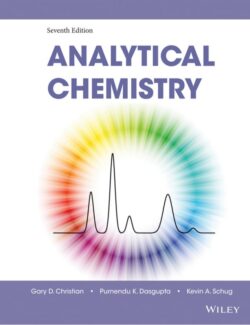
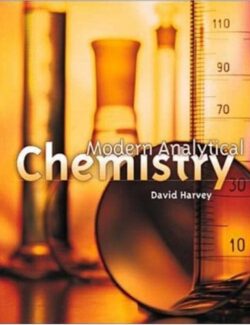
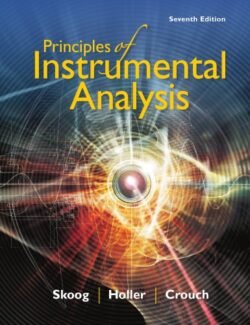
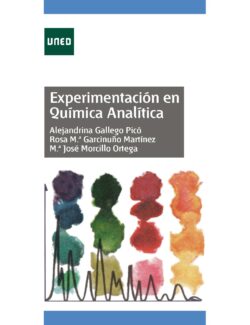
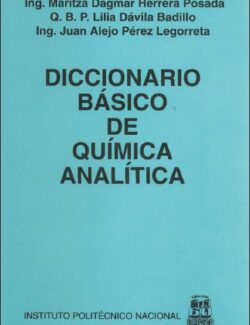
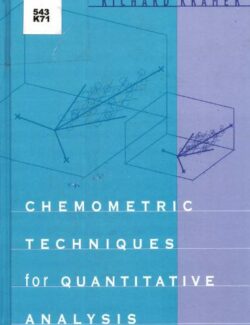
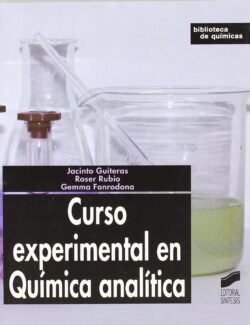




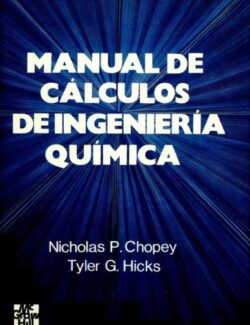
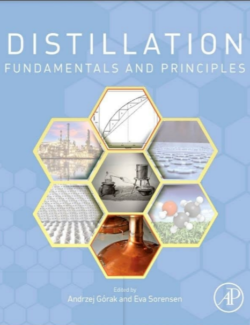
Déjanos un comentario
No hay comentarios